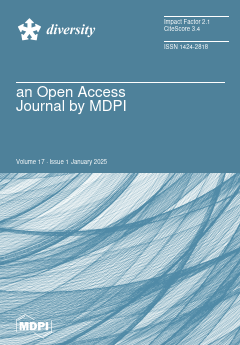A major threat to biodiversity is represented by Invasive Alien Species (IAS), particularly on freshwater ecosystems, which are already heavily altered by human activities. Two of the most pernicious IAS are the eastern and western mosquitofish, i.e.,
Gambusia holbrooki and
G.
affinis. These two poeciliids are morphologically very close to each other, and soon after their formal description,
G.
holbrooki was considered a subspecies of
G.
affinis. In the following years, several studies proved that these two entities belonged to two different species; nevertheless, it was only at the end of the 1990s that their separate taxonomic status was re-established. In the 1920s and 1930s, both
G. holbrooki and
G.
affinis were asynchronously introduced from the United States into Europe and subsequently translocated globally as biocontrol agents of the malaria vector (i.e., the larvae of the
Anopheles mosquitoes), with dramatic consequences for the inland water native fauna. However, due to taxonomic uncertainties and nomenclatural instability, for years, there were doubts about which
Gambusia species had been introduced in different regions. The first available molecular studies confirmed the occurrence of
G.
holbrooki in Europe, but no evidence confirming the occurrence of
G.
affinis was found. Despite this, some records report the occurrence of western mosquitofish in Italy and Malta. Considering the negative effects that the mosquitofish has on the native biota, it is of paramount importance to know the precise biological diversity of the native and non-native species to better implement environmental management strategies to properly preserve the already-fragile waterbodies. Therefore, to check for the possible occurrence of
G.
affinis in Italy and Malta, we conducted extensive sampling in Sicily (Italy) and in the Maltese archipelago, aiming to verify the identity of
Gambusia populations occurring in the study area. Based on sequences of the mitochondrial cytochrome b gene, we consistently observed the occurrence of only
G. holbrooki in the investigated area, finding, almost exclusively, the most common haplotype known for the species in the whole invaded range (i.e., “HOL1”).
Full article





